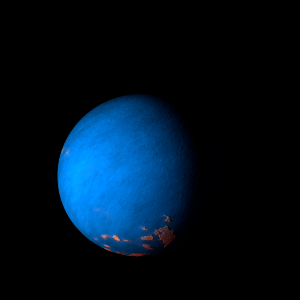|
|
Space Astro
|
Info for exoplanet "Hanangk"
| Scientific (actual) data |
|---|
| Name | TOI-554 c |
| Planet status | Confirmed |
| Planet mass | 0.0135 |
| Radius | 0.134 |
| Orbital period | 3.04405 |
| Semi major axis | 0.0443 |
| Orbit eccentricity | 0.23 |
| Discovered | 2022 |
| Updated | 2024-05-27 |
| Tzero tr | 2458440 |
| K | 1.6 |
| Temperature (kelvin) | 1700 |
| Publication | Published in a refereed paper |
| Detection type | Primary Transit |
| Mass measurement type | Radial Velocity |
| Radius measurement type | Primary Transit |
| Alternate names | HD 25463 c |
| Star name | TOI-554 |
| Right ascension | 60.75° |
| Declination | 9.21° |
| Mag v | 6.9 |
| Star distance | 45.6181 |
| Star mass | 1.24 |
| Star radius | 1.43 |
| Star temperature | 6338 |
| Star alternate names | HD 25463 |
| Wikipedia article | TOI-554 c |
Back
| |
| Fictional info (?) |
|---|
| Suggested name | Hanangk |
| Planet type | Hot planet |
| The smooth Borealis basin in the northern hemisphere covers 26 percent of the planet and may be a giant impact feature. |
| Atmosphere | Hydrogen deuteride (HD) | 58% |
| Ozone | 19% |
| 2H2O | 15% |
| Hydrogen chloride | 6.7% |
| Carbon monoxide | 0.79% |
| Argon | 0.0039% |
| Oxygen | 5.5E-5% |
| Hydrogen | 2.6E-5% |
| Atmospheric pressure | 5 bar |
 |
| No known satellites |
| Google search for Hanangk |
|
Website by Joachim Michaelis
|
|
|
|